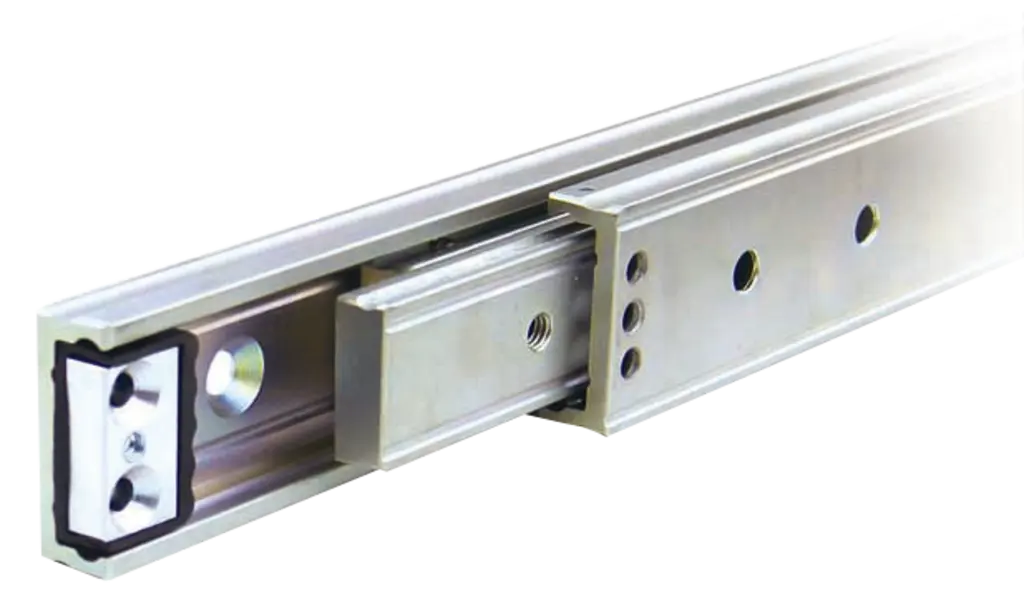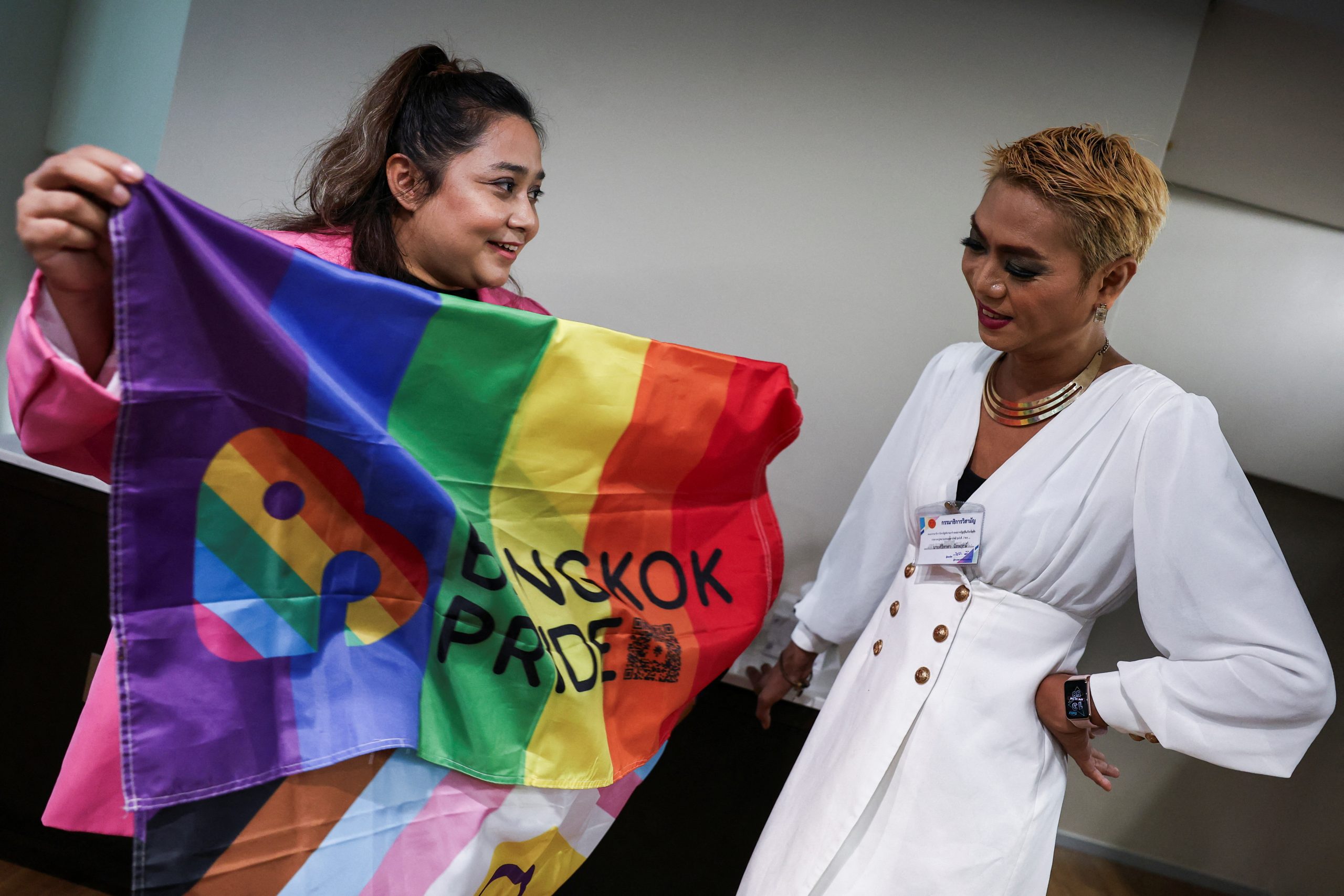Legal
Heavy Duty Sliding Rail System

Rail Lengths and Travel, Load Capacity, and Ball Bearing or Roller Runners Materials Options 1: heavy duty sliding rail system and Stroke First, ascertain the required length of the guide rail for your installation.
You are aware of the travel time; This is your first piece of information. You can guide the device to be moved with one, two, or more runners per rail, depending on its size and mass.
Every runner’s use of space must be taken into account. Because the rails have end stops, this dimension must also be taken into consideration.
Accordingly, the component of your straight aide rail will be:
- Aspect utilized by the direct bearing sprinters
- + Stroke Length
- + Aspects of the end stops
We offer a few kinds of lengths:
Standard Linear Rails, which will speed up manufacturing: With lengths in strides of 50 to 100mm. For logistical reasons, we limit the maximum length to 2 meters. The following rails are shipped:
undrilled, pre-equipped end stops; During assembly, you will only need to counterdrill them.
Available immediately in four predetermined lengths (with stoppers included): IN STOCK
Specific Guide Rails: 500 mm, 1000 mm, 1500 mm, and 2000 mm
You want to include a rail of a particular length in your project, receive your rails pre-drilled, or have the option of doing so.
Once more, we have the answer! Maxavegroup, as a manufacturer, creates the ideal sliding rail for your installation down to the millimeter for you!
We cut it for you, so you don’t have to cut it in your workshop anymore! Is it necessary to perform a particular treatment, lubrication, or drilling?
We can help you with that! At the end of this article, we invite you to learn more about our options!
2 – Metal ball or roller sprinters and burden
Whenever you have picked the length of your straight aide rail, comes the subject of the sprinter.
The ball bearing runner you choose will be determined by your device’s mass and available space.
The heap we give is demonstrated PER Sprinter: Consequently, mounting two sliders increases load capacity by two.
Additionally, we offer recirculating ball bearing slides that are capable of supporting 600 kilograms per runner!
The runner is shaped by the load, which in turn shapes the rail!
- Our guides are produced using two technologies:
- Roller runner or ball bearing runner?
- What distinguishes these two types?
Runner with ball bearings:
It is our most popular product and perfectly suited for industrial settings.
These linear rails with a recirculating ball bearing runner, which are both strong and small, can support hundreds of kilograms Roller runners:
Two examples of roller skids supporting medium-to-heavy loads are provided by us: one complete guide rail made of stainless steel, the other made of steel and has plastic-coated rollers.
These two kinds of runners can be inserted into a number of linear guide rails made of stainless steel, aluminum, or steel.
They travel through the rail more quietly and smoothly than the recirculating bearing runners.
They are valued for establishments on sliding entryways, machine lodgings or defensive hoods.
They are movable, to the extent that the center sprinter is on a flexible excentric screw.
This makes it possible to adjust the play and movement smoothly.
Material No. 3:
Depending on your project, we offer three different materials for our range of telescopic slides:
The aluminum linear guide rail The galvanized steel linear guide The stainless steel sliding rail Steel is the most common material, but stainless steel is sometimes required for clean rooms or outdoor environments.
Steel is the most common material, but stainless steel is sometimes required for clean rooms or outdoor environments.
Five Options:
You have now determined the standard guide rail you need to meet your requirements by following these various steps! Why not go a little bit further? Indeed, maxavegroup provides a variety of choices to assist you in building your project!
Drilling rails:
We manufacture and deliver all of our standard linear rails without drilling. We are able to provide a bespoke drilling scheme based on your drawing for an additional fee upon request.
Threaded are our runners. These drillings can’t be changed.
Greasing:
The sprinters are lubed in the plant (high tension bearing oil or white oil). However, you can request a particular grease:
food-safe, high temperature, and no teflon or even grease (not recommended).
Particular rail surface treatment: increased resistance to corrosion and hardness…
wiper kit: This wiper kit that is mounted on the runner makes it possible to push dust and other impurities out of the raceways in order to optimize the ball bearing skid’s movement.
What to Consider with Hotel and Restaurant Furniture
Comfort
When selecting chairs for hotels and restaurants, comfort must always come first. This is accurate, particularly in the hospitality sector. This is because the experiences and satisfaction of your customers and guests are crucial to your business’s growth and success.
Restaurant owners must ensure that their seating furniture provides maximum comfort. Given that a restaurant’s entire operation may take some time, diners are expected to sit for a considerable amount of time.
In addition, guests should choose hotels that offer hospitable pieces of furniture for working or relaxing areas.
As a result, giving them a home-like experience while they are away from it.
We strongly suggest taking into account the size, base materials, and finishes of the furniture to ensure comfort.
The length, width, and height of the furniture are the three dimensions that determine its size. This is to make use of the space that has been allotted to it and give guests enough room to work.
In addition, guests will be able to relax in comfort if the base material and finish are just right, such as upholstered or plain, gleaming finishes.
Design
Hence, the design is close to comfort. Customers and guests are left with a positive first impression of the space as a whole.
For a good balance, hotel and restaurant furniture must be trendy and sophisticated in an unpretentious way at first glance without sacrificing comfort.
To avoid design inconsistencies and tragic aesthetic mishaps, hotel and restaurant furniture must primarily coordinate with the overall interior.
To begin, you should select a design that is appropriate for your restaurant or hotel. With such a design style WHC SOLAR ought to reflect your unique brand identity and embody your ideals.
There are interior design trends that you should be aware of in 2022 to support your artistic choices.
These trends are timely and will undoubtedly assist you in achieving your desired style. You should also keep an eye out for furniture trends.
Related CTN News:
International Sim Card for Travel and Other Life Hacks for Passionate Adventurers

Legal
Thai Court Amends Law to Allows Wives to Sue Husband’s Lovers

Thailand’s Constitutional Court has changed the Civil Code will allow women to sue their husbands’ lovers, male or female. The Constitutional Court found on Tuesday that Section 1523 of the Civil Code breached Section 27 of the constitution, which safeguards Thais’ rights and liberties regardless of gender.
The court directed that the verdict be enforced within 360 days.
Section 1523 of the Civil Code states that husbands can sue their wives’ lovers, and wives can sue other women who publicly display an adulterous connection with their husband.
Keirov Kritteeranon, secretary-general of the Office of the Ombudsman, stated that the Ombudsman had previously urged the court to rule on the legality of Section 1523, which allowed wives to suit only female lovers.
Husbands can now sue their wives’ boyfriends regardless of gender, and there was no requirement for any public declaration of an adulterous connection, he claimed.
Once enforced, Tuesday’s Constitutional Court order, according to the Ombudsman, will correct this imbalance.
Thailand Amends Marriage Law
Meanwhile, Thailand is set to become the first Southeast Asian country to recognise same-sex marriage, after its marriage equality law was passed in the Upper House on Tuesday and is now on its approach to being promulgated before going into effect in the coming months.
LGBTQ+ advocates rejoiced as the Senate voted 130-4 to pass the bill on its final reading, with 18 abstentions. They hailed the development as a win in their long struggle for equal rights.
When the advocates who had gathered at parliament on Tuesday to witness the Senate’s final reading and vote on the measure heard the outcome, they burst out in cheers.
They next went to authorities House, where the authorities had planned a celebratory reception for them later in the day. They then went to the Bangkok Art and Culture Centre, where the party lasted until late at night.
Prime Minister Srettha Thavisin, who is on sick leave due to Covid-19, congratulated them via Zoom call from Government House.
The new law will allow any two people aged 18 or older to register their marriage and obtain the same advantages and rights as heterosexual couples. The bill refers to married couples as “two individuals” rather than “a man and a woman,” and changes their legal status from “husband and wife” to “spouses.”
LGBTQ+ people from any country can legally marry in Thailand. When the bill goes into force, foreign same-sex married partners will be eligible for a spousal visa.
The law will be sent to the government for approval before being presented to the monarch.
It will take effect within 120 days of its publication in the Royal Gazette, making Thailand the third Asian country to accept same-sex marriages after Nepal and Taiwan.
Senator Kamnoon Sidhisamarn, spokesman for the Senate’s special committee evaluating the proposed law, called it a victory for equal rights campaigners.
“There is no reason for the Upper House to disagree with the judgement made by the House of Representatives,” he told reporters. He was referring to the legislation’s passage in the Lower House prior to its submission to the Senate for approval.
The battle for same-sex marriage legislation began 23 years ago. Tunyawaj Kamolwongwat, a Move Forward Party list-MP, said that the law’s passage on Tuesday signified the beginning of a new chapter in Thai history.
Source: Bangkok Post
Court Upholds Israel’s Ban on News Agency Al Jazeera
Legal
Thailand’s Senate Passes Landmark Marriage Equity Bill Legalizing Gay Marriage

Thailand’s Senate has approved a long awaited marriage equality bill on Tuesday, making the country the third Asian country to accept same-sex couples. The Senate approved the law 130-4 with 18 abstentions.
The marriage equality bill will be sent the palace for royal clearance. The marriage equality law takes 120 days to take effect after Royal Gazette publication.
LGBTQ+ advocates welcomed the proposal a “monumental step forward” because Thailand would be the first Southeast Asian country to legalise marriage equality. Thailand is popular with travellers due to its LGBTQ+ culture and tolerance.
“This would underscore Thailand’s leadership in the region in promoting human rights and gender equality,” the Civil Society Commission of marriage equality, activists, and LGBTI+ couples said.
Prime Minister Srettha Thavisin, who wore a rainbow shirt to commemorate Pride Month, joined thousands of LGBTQ+ revellers and activists in a Bangkok parade at the start of June.
The prime minister will open Government House to commemorate the bill’s passage. Pride supporters will march from Parliament to the prime minister’s office. Mr. Srettha, who has Covid-19, will join them online after taking several days off.
Deputy Prime Minister and Commerce Minister Phumtham Wechayachai anticipates June’s Pride Month to create approximately 4.5 billion baht in economic cash flow.

Pride Month in Thailand
On Saturday, Mr. Phumtham said the government under Prime Minister Srettha Thavisin is encouraging sexual diversity and working with the commercial sector to plan more Pride Month festivities to attract LGBTQ+ tourists.
He claimed it will increase the country’s trade potential by giving SMEs business expansion chances and adding soft power value.
Mr. Phumtham claimed Poonpong Naiyanapakorn, director-general of the Trade Policy and Strategy Office, told him Pride Month celebrations will make Thailand a “pride-friendly destination” for LGBTQ+ Thai and global consumers.
This would help the country become a regional tourism hub under the government’s “Ignite Tourism Thailand” initiative to enhance tourism in 55 “worth visiting” provinces.
He added that such festivals will support downstream industries like event planners, food and beverage companies, hotels, and transport services and disperse cash to local areas. Mr. Phumtham stated Thailand’s Pride Month began in 1999. Bangkok, Chiang Mai, Phuket, and Chon Buri host parades, festivities, and campaigns.
The Tourism Authority of Thailand (TAT) expects approximately 860,000 people to attend this year’s festival and contribute at least 4.5 billion baht for the economy. LGBT Capital estimates that the world’s LGBTQ+ population has US$4.7 trillion in purchasing power and Thailand’s sexually varied population has US$26 billion.
LGBTQ+ rights in Thailand are improving, but there’s still much to do. The LGBTQ+ community in Thailand is notably strong in Bangkok and Pattaya.
Strong legal recognition allows transgender people to change their names and titles. Many LGBTQ+ couples lack legal rights since same-sex marriage is banned.

LGBTQ+ rights in Thailand
Thailand is becoming more accepting despite these difficulties. LGBTQ+ rights are gaining favour. Activists want legal changes to guarantee equality.
Pride parades are becoming increasingly visible, demonstrating diverse acceptance. While challenges remain, LGBTQ+ rights in Thailand are improving as awareness and acceptance expand.
Legal
Protecting Your Designs: Intellectual Property Rights in the Jewelry Manufacturing Industry

The jewelry manufacturing industry is a vibrant and highly competitive sector where creativity and innovation are paramount. Designers invest significant time, effort, and resources into crafting unique pieces that appeal to consumers’ tastes and preferences. However, this industry faces a persistent challenge: the protection of original designs from imitation and unauthorized use.
Intellectual property rights (IPR) play a crucial role in safeguarding jewellery designs, ensuring that creators receive recognition and financial benefits from their work. This article delves into the various forms of intellectual property rights pertinent to the jewelry manufacturing industry and offers insights on how designers can protect their creations.
Understanding Intellectual Property Rights
Intellectual property rights are legal mechanisms that grant creators exclusive rights to their inventions, designs, and artistic works. These rights encourage innovation by providing creators with the means to control the use of their creations and to benefit financially from them. In the context of jewelry design, the most relevant forms of IPR are copyrights, trademarks, patents, and design rights.
Copyrights
Copyright protection extends to original works of authorship, including artistic creations such as jewelry designs. Under copyright law, the designer of a piece of jewelry automatically acquires the exclusive right to reproduce, distribute, and display the design upon its creation. This protection does not require registration, although registering the copyright with the appropriate governmental body, such as the U.S. Copyright Office, can provide additional legal benefits and evidence of ownership.
For jewelry designers, copyright protects the aesthetic aspects of a piece, such as the specific design, patterns, and artistic expressions. However, it does not cover the functional elements or the materials used. The duration of copyright protection varies by country, but it typically lasts for the life of the creator plus an additional 50 to 70 years.
Trademarks
Trademarks protect symbols, names, logos, and slogans that distinguish goods and services in the marketplace. For jewelry manufacturers, a trademark can cover the brand name, logo, or even a unique product line name.
Registering a trademark with the appropriate authority, such as the United States Patent and Trademark Office (USPTO), provides nationwide protection and the exclusive right to use the mark in connection with the specified goods or services.
A strong trademark helps consumers identify and differentiate a brand’s products from those of competitors, fostering brand loyalty and reducing the risk of confusion in the marketplace. It also provides legal recourse against counterfeiting and unauthorised use of the brand’s identity.
Patents
Patents protect new inventions and technical innovations. In the jewelry industry, this could include innovative manufacturing processes, unique mechanisms for adjustable or interchangeable jewelry, or novel materials and techniques. A patent grants the inventor the exclusive right to use, make, and sell the invention for a limited period, usually 20 years from the filing date of the patent application.
Obtaining a patent involves a rigorous process of proving that the invention is novel, non-obvious, and useful. For jewelry designers, the primary benefit of patent protection lies in safeguarding their innovative techniques and mechanical features, which can provide a competitive edge in the market.
Design Rights
Design rights specifically protect the visual appearance of a product, including its shape, configuration, pattern, and ornamentation. These rights are particularly relevant to the jewelry industry, where the aesthetic appeal of a product is a key selling point. In many jurisdictions, design rights must be registered to be enforceable, though some countries offer unregistered design rights that provide limited protection.
Registering a design right involves submitting detailed representations of the design to the relevant authority, such as the European Union Intellectual Property Office (EUIPO) for protection within the EU. Registered design rights typically offer protection for up to 25 years, subject to renewal fees.
Steps to Protect Jewelry Designs
- Document Your Designs: Maintain detailed records of your design process, including sketches, prototypes, and finished pieces. This documentation can serve as evidence of originality and ownership in case of disputes.
- Conduct Searches: Before launching a new design, conduct thorough searches to ensure it does not infringe on existing intellectual property. This can prevent legal issues and costly disputes.
- Register Your IP: Where applicable, register your copyrights, trademarks, patents, and design rights with the appropriate authorities. Registration enhances protection and provides legal advantages in enforcing your rights.
- Use NDAs and Contracts: When working with manufacturers, suppliers, and collaborators, use non-disclosure agreements (NDAs) and detailed contracts to protect your designs and outline the terms of use. ( Check out EJ: A Jewelry Manufacturer with NDA’s.
- Monitor the Market: Regularly monitor the market for potential infringements. This can involve online searches, attending trade shows, and staying informed about competitors’ activities.
- Take Legal Action if Necessary: If you discover an infringement, take prompt legal action to enforce your rights. This may involve sending cease-and-desist letters, pursuing litigation, or seeking alternative dispute resolution methods.
Challenges and Considerations
While intellectual property rights offer significant protection, there are challenges and limitations to consider. The cost and complexity of obtaining and enforcing IPR can be prohibitive, especially for small designers and startups. Additionally, the global nature of the jewelry market means that protections obtained in one jurisdiction may not be recognized elsewhere, necessitating international strategies for comprehensive protection.
Moreover, the fast-paced nature of fashion and jewelry trends can make lengthy registration processes impractical for certain designs. In such cases, relying on unregistered design rights or focusing on brand protection through trademarks may be more viable strategies.
Conclusion
Intellectual property rights are a vital tool for protecting the creativity and innovation that drive the jewelry manufacturing industry. By understanding and strategically utilizing copyrights, trademarks, patents, and design rights, designers can safeguard their creations, enhance their competitive edge, and ensure they reap the financial rewards of their ingenuity. As the industry continues to evolve, staying informed about IPR and adapting to emerging challenges will be crucial for sustaining success in the dynamic world of jewelry design.
People Also Reading:
Law Firm Chastised for Using OpenAI ChatGPT for Legal Research
Law Firm Chastised for Using OpenAI ChatGPT for Legal Research
-

 News3 years ago
News3 years agoLet’s Know About Ultra High Net Worth Individual
-
Entertainment2 years ago
Mabelle Prior: The Voice of Hope, Resilience, and Diversity Inspiring Generations
-

 Health3 years ago
Health3 years agoHow Much Ivermectin Should You Take?
-

 Tech2 years ago
Tech2 years agoTop Forex Brokers of 2023: Reviews and Analysis for Successful Trading
-

 Lifestyles3 years ago
Lifestyles3 years agoAries Soulmate Signs
-

 Movies2 years ago
Movies2 years agoWhat Should I Do If Disney Plus Keeps Logging Me Out of TV?
-

 Health3 years ago
Health3 years agoCan I Buy Ivermectin Without A Prescription in the USA?
-

 Learning3 years ago
Learning3 years agoVirtual Numbers: What Are They For?